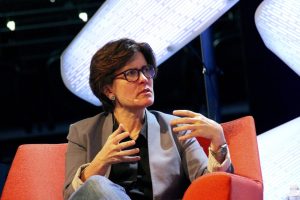The fashion industry is facing the urgent need to focus on sustainability more than ever before. While progress has been made, there is still a long way to go. The relationship between business and sustainability is crucial, with both being interconnected and mutually reinforcing. Companies focusing on sustainability are not only more financially successful but also more resilient and efficient in the long term. Aligning business objectives with sustainability goals is key to driving real change in the industry.
There is often a disconnect between the immediate needs of the business and the long-term sustainability objectives in the fashion industry. It is essential for leaders to balance short-term priorities with long-term environmental and social goals. Additionally, communication between fashion companies and consumers needs to be improved to ensure alignment on sustainability issues. It is vital for the entire C-suite to prioritize sustainability and integrate it into every aspect of the organization to drive meaningful change.
One approach leaders can take is to focus on nine key areas across the retail organization to ensure sustainability is integrated into all operations. This holistic approach includes finance, raw materials, design, sourcing, packaging, merchandising, logistics, fulfillment, and marketing. Implementing sustainable practices in these areas, such as standardizing raw material use and adapting packaging for different channels, can help reduce waste and costs while driving innovation and change in the industry.
Innovations in sustainable products and materials are already being implemented by some fashion brands. For example, Stella McCartney introduced a seaweed-based fabric in her runway show, which has a smaller carbon footprint and requires less water usage. Innovations like bacteria-based and algae-based dyes offer sustainable solutions to textile dying pollution. Recycling challenges are being addressed with the use of AI and robotics to sort garments based on their composition, turning obstacles into opportunities for sustainability.
Fashion has the potential to drive real change in sustainability with innovations and a strong focus on sustainability across the industry. It is crucial for fashion leaders to seize this moment and embed sustainability into every part of the retail value chain to make significant progress. Sustainability, profitability, responsibility, and resilience are not conflicting priorities but rather interdependent objectives that can be achieved when sustainability is at the core of business operations. By scaling sustainability initiatives and driving innovation, the fashion industry can contribute to a more sustainable and resilient future.













